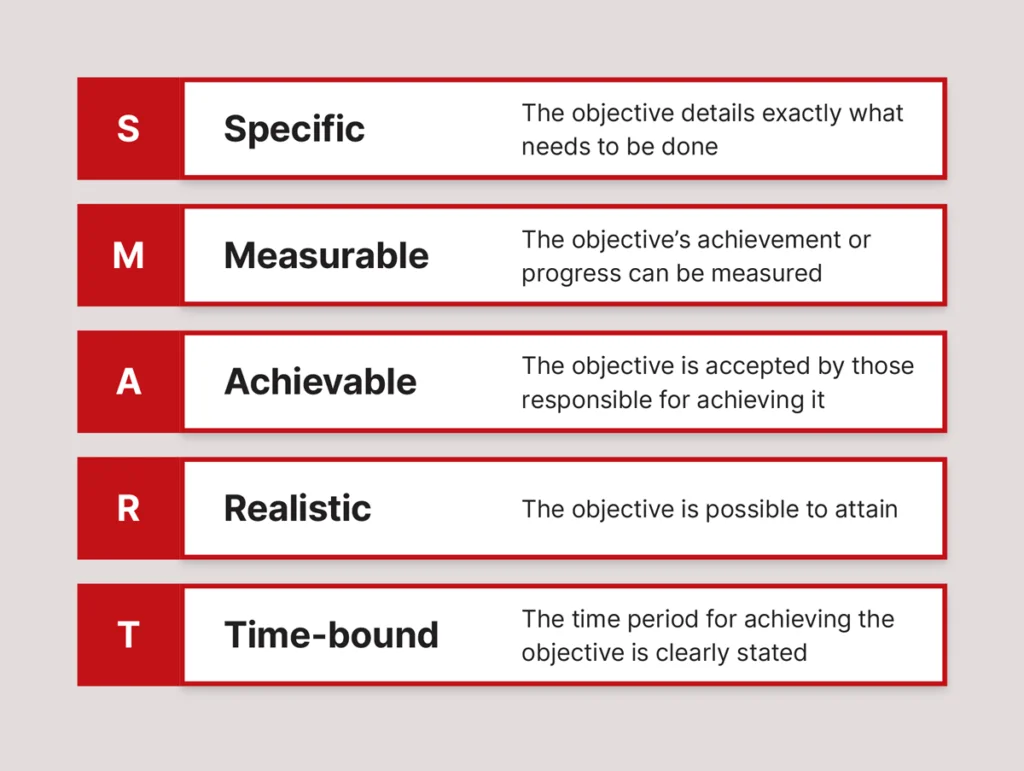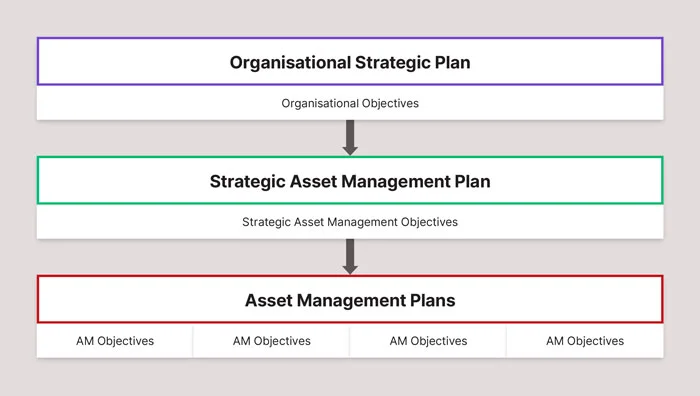Without clear asset management objectives, asset management plans will, at best, be less effective than they should be, and at worst, could actually take the organisation in the wrong direction. In this article, we discuss the vital role that asset management objectives play in the asset management planning process.
One of the things that we frequently observe when we work with organisations that are seeking to align or certify against ISO 55001 is that they tend to quickly zero in on the need to create a Strategic Asset Management Plan and asset management plans. This is mainly because these are documents that they do not have. Often overlooked in the rush to prepare these plans is recognition that these plans should be aimed at achieving specific outcomes, and that unless the desired outcomes are clearly specified and agreed upon, then the plans are likely to be inadequate or misaligned. In the words of Lewis Carroll, “if you don’t know where you are going, then any road will get you there”.
The desired outcomes are called “objectives” in ISO-speak, and we will discuss these in this article.
What are asset management objectives?
What is an “objective”? ISO 55000:2014 defines an objective as being a “result to be achieved” (ISO, 2014a, p.11). This is a short, but very powerful definition.
When applied to asset management, asset management objectives are the results that we wish our asset management system to deliver. They address both the assets and the tools for managing them (i.e. The asset management system) and examples might include:
- Achieve 94% availability in the process plant,
- Expand capacity to 2.4 million units per annum, or
- Introduce a new ERP system to support expansion to multi-site operations.
As can be seen from the examples, these objectives reflect the outcomes that asset management should produce but don’t specify how they are to be achieved.
Further, ISO 55002:2018 suggests that asset management objectives should be SMART (Specific, Measurable, Achievable, Realistic and Time-bound) as illustrated in the following diagram:

Within these guidelines, asset management objectives can still be either quantitative or qualitative. Quantitative objectives are able to be measured – e.g. Mean Time Between Failures – while qualitative objectives are more subjective – e.g. customer satisfaction. Note that while ISO 55002 guidance recommends SMART objectives, ISO 55001 only requires objectives to be measurable “if practical”.
Measurable objectives can also relate to the achievement of specific target levels of performance (e.g. as discussed previously “Achieve 94% availability in the process plant”) or they can be milestone-based (e.g. “achieve certification against ISO 55001 by the end of 2024”)
Objectives can also be:
- Strategic (i.e. high level and focused on the long term),
- Tactical (i.e. mid-level and focused on the medium term, and
- Operational (i.e. lower-level and focused on the short term)
Equally, they can apply to the entire organisation or to sub-sections within the organisation (departments, workgroups etc.)
The importance of aligning asset management objectives
It is essential that all these objectives are aligned. Without that alignment, the organisation cannot achieve “coordinated activity to deliver value from assets” – which is the definition of asset management. And without explicitly ensuring that all these objectives are aligned, then we cannot ensure that the various organisational plans that are put in place (to achieve those objectives) are aligned and coordinated. This alignment needs to be both vertical (downwards through the organisation) as well as horizontal (across business functions and departments).
An illustration of vertical alignment of objectives is shown in the following diagram.

The following is an example of cascading, aligned objectives:
- Organisational objective
- Improve the current profit before tax by 15% within the next 3 years
- Strategic asset management objective
- Develop and implement optimal operating and maintenance strategies over the next 3 years.
- Asset management plan objectives
- Develop FMECA capability
- Perform FMECA on all critical assets by the end of 2021
Obtaining clarity (preferably ensuring that objectives are SMART) and alignment regarding objectives, therefore, is one of the most critical activities that an organisation should undertake before developing the Strategic Asset Management Plan and asset management plans. Without absolute clarity regarding what these plans have to achieve, then these plans will, at best, be less effective than they should be, and at worst, could actually take the organisation in the wrong direction.
It is in this area that we frequently find improvement opportunities within the client organisations that we work with.
How can Assetivity help?
We have a structured approach for the development of asset management objectives that results in objectives that are:
- SMART
- Aligned with organisational objectives, and
- Embraced and accepted by all functions involved in asset management
If you would like to learn more, contact us now.
